Creating art with charcoal is a dance of shadows and light, especially in still life compositions. Mastering the ability to see and replicate these elements on paper can be quite challenging but also immensely rewarding. This article will provide practical advice and exercises to help artists at all levels cultivate a keen eye for lighting and contrast within their charcoal still life artwork. Through practice and observation, artists can uncover the nuances of light and dark, capturing depth and realism in their creations.
Grasping the Basics of Charcoal
Understanding Charcoal Medium
Charcoal is a versatile and expressive medium known for its rich blacks and range of grays, making it ideal for exploring light and dark in still life art. Familiarize yourself with the different types of charcoal, including vine, compressed, and pencil forms. Each kind offers varying levels of hardness and intensity, allowing for a broad spectrum of tones from the deepest blacks to the softest grays. Selecting the appropriate charcoal for your piece is the first step in harnessing the medium’s potential.
Technique and Tools
Learning various techniques such as hatching, cross-hatching, blending, and stippling will expand your ability to render textures and contours. Utilize tools like blending stumps, kneaded erasers, and chamois cloths to manipulate the charcoal on the paper. Experimenting with these methods will give you more control over shading and help develop your own unique style in capturing light and darkness.
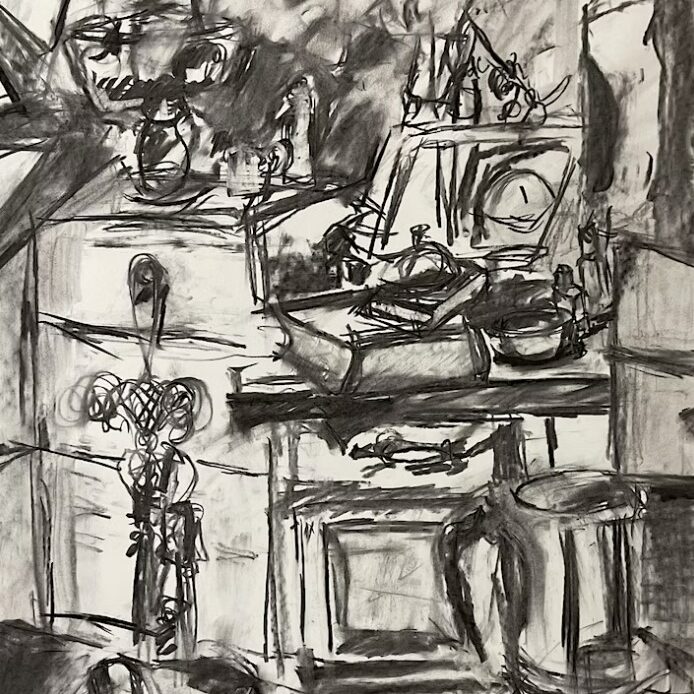
Observing Light and Shadow
The Role of Observation
The cornerstone of still life charcoal drawing is keen observation. Spend time studying your subject under different lighting conditions. Notice how the light falls, where the shadow’s edges are crisp, and where they diffuse softly. Training your eye to detect these subtleties in your environment will enhance your ability to translate them into your artwork.
Setting Up Effective Lighting
Create a controlled environment for your still life setup with a single light source to establish clear direction for the light and shadow. A lamp with an adjustable arm and intensity can be particularly useful for this purpose. By manipulating the position and brightness, you can observe and practice drawing various tonal ranges, sharpening your perception of the interaction between light and dark.
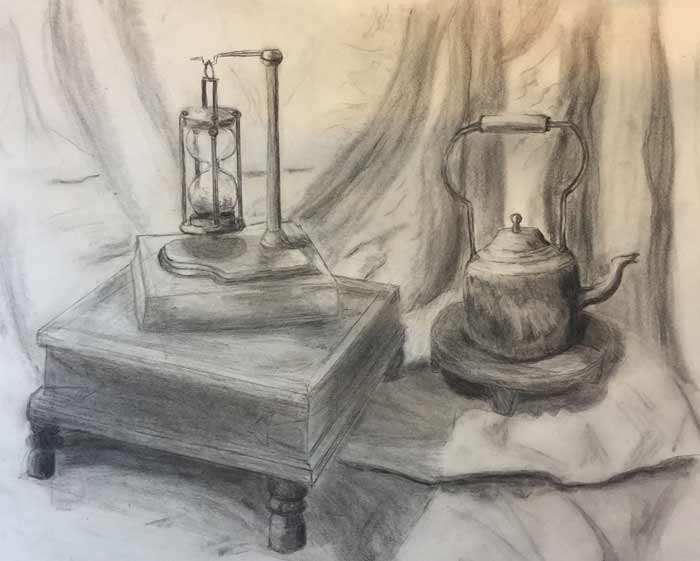
Emphasizing Contrast in Your Work
Planning Your Composition
Before ever touching charcoal to paper, plan your composition. Decide on the placement of objects, the light source, and the anticipated contrast levels. Sketching out a rudimentary layout with light pencil marks can serve as a guideline for areas of dark and light and help maintain the balance between the two as you progress.
Bold Use of Blacks and Whites
Don’t be afraid to push the darkness of the blacks and the purity of the whites in your drawing. Utilizing the full tonal range available with charcoal can bring a dramatic and lifelike quality to your still life. Pay attention to highlight the brightest areas and the darkest shadows, as this contrast is key in adding dimension and depth.
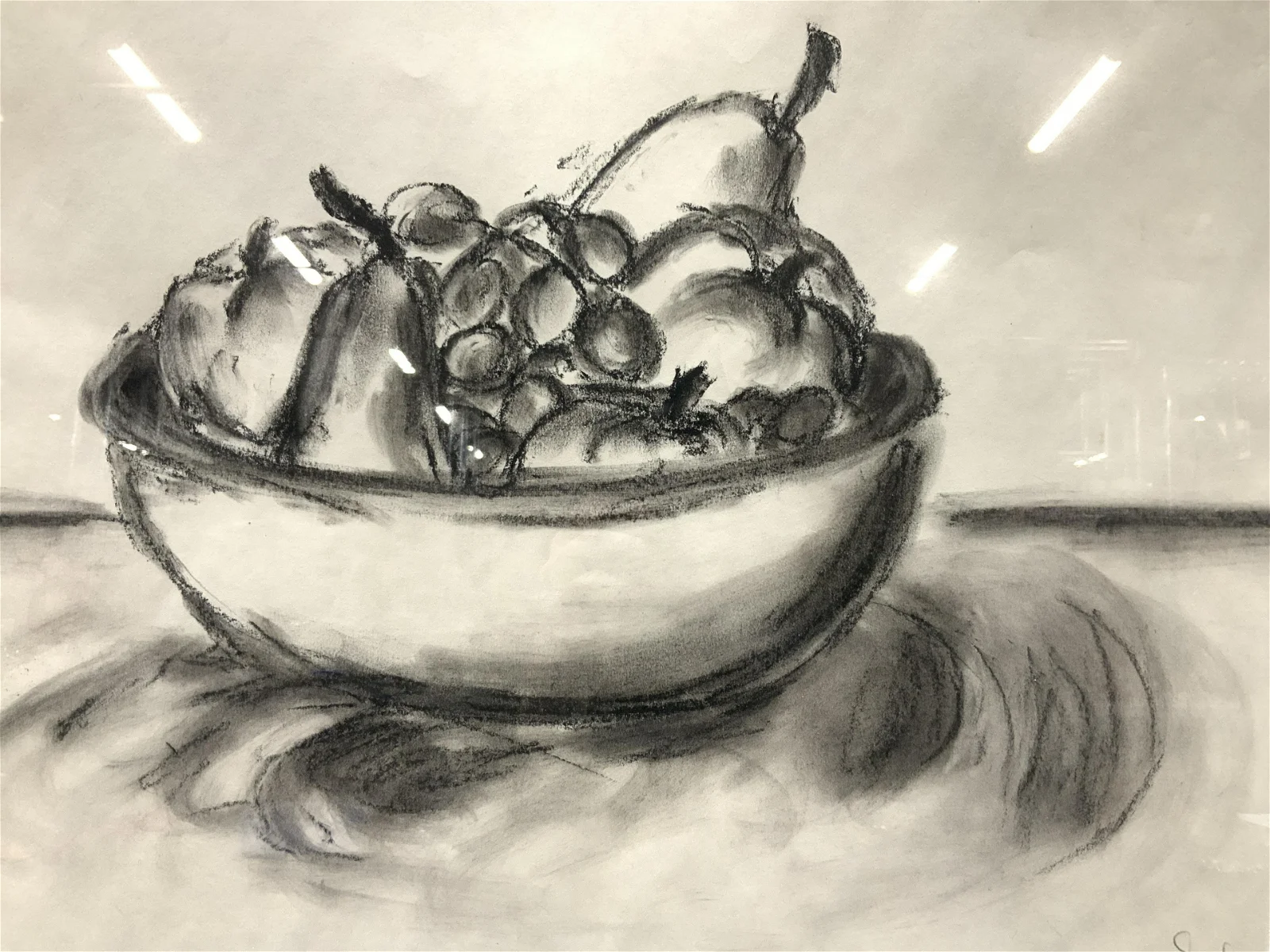
Developing Shading Techniques
The Importance of Mid-tones
While black and white are critical for contrast, the mid-tones are what provide the transition and subtlety in your work. Practice developing a smooth gradient from your darkest darks to your lightest lights. The ability to create seamless transitions will add realism to your piece and make the objects in your still life appear three-dimensional.
Building Up Layers
Rather than trying to achieve the perfect tone immediately, work in layers. Start with lighter pressure to establish the general shapes and shadows, and gradually build up to darker tones where necessary. Layering allows for more flexibility and provides a safety net; it’s much easier to darken a drawing than it is to lighten it.
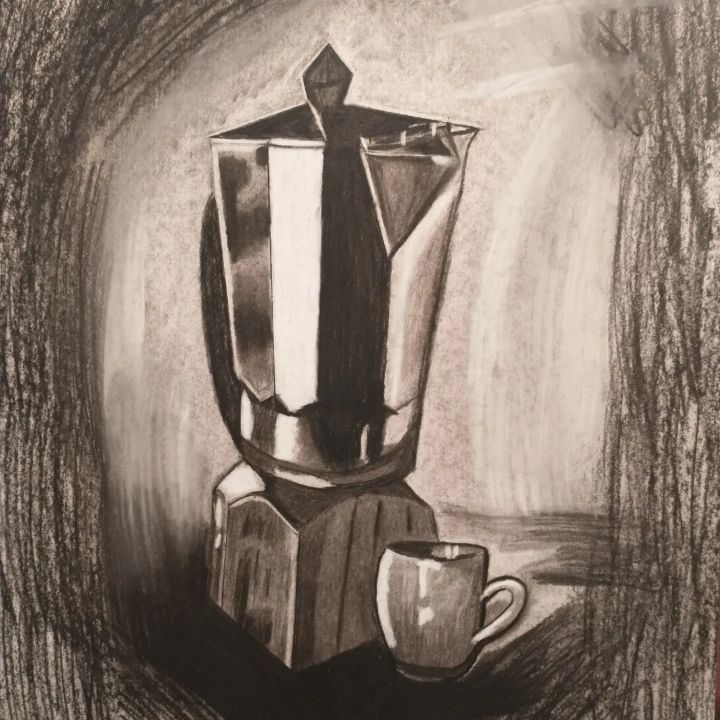
Refining Details and Textures
Addressing the Finer Points
After establishing the broad strokes of light and shadows, refocus your attention on the details. Examine the textures and patterns within your still life. Use sharper charcoal pencils or sticks to create fine lines and intricate shadows, defining the character and surface of each object within the scene.
Dynamic Adjustments
As your image takes shape, step back and review your work. You might find areas where adjustments in contrast or texture are needed. Use your kneaded eraser to lift charcoal for highlights or add a bold stroke to deepen a shadow. Remember, a still life drawing is dynamic, and refinement is an ongoing process.
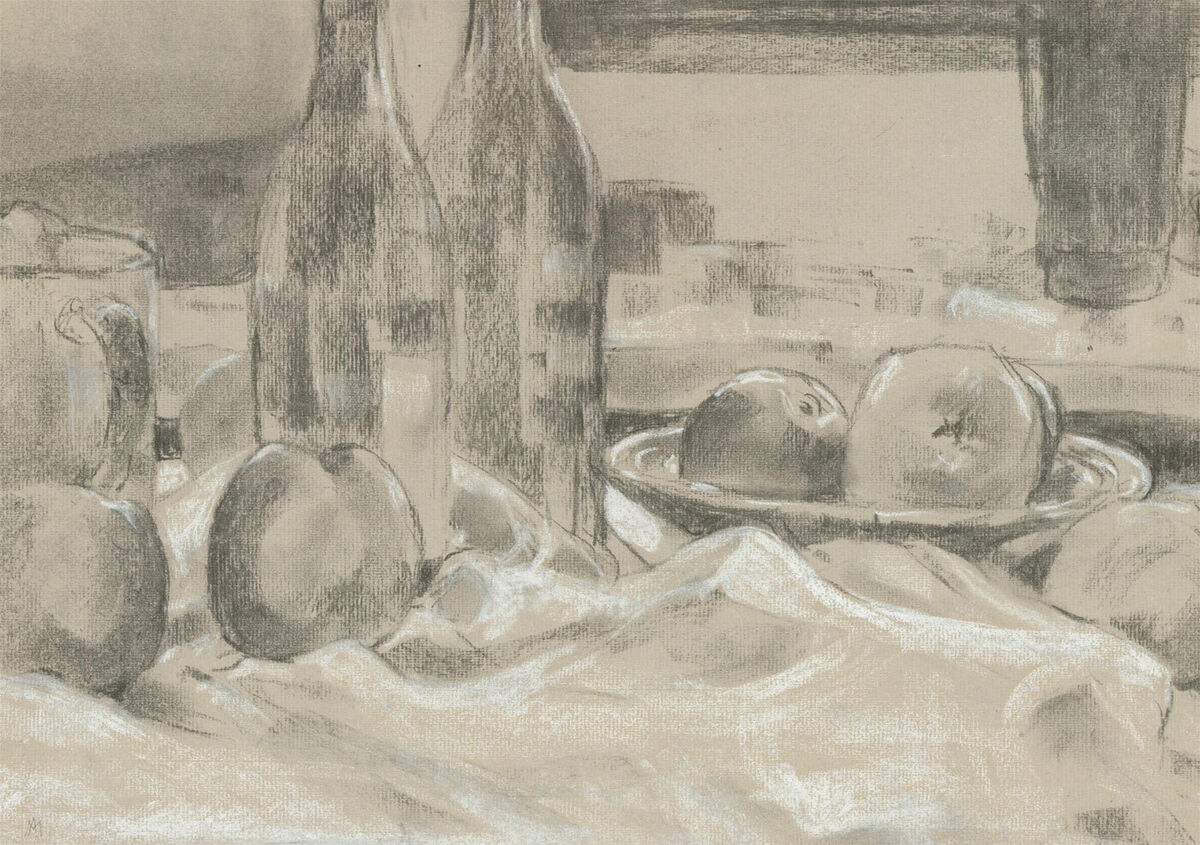
Final Thoughts: Capturing the Essence
Bracing for Perfection
Undoubtedly, learning to see and portray light and dark with charcoal takes time. Don’t seek immediate perfection; embrace the process of continuous learning and improvement. Each piece you create will contribute to your growth as an artist and your ability to see the world through a lens of shadow and light.
Sharing Your Vision
Once you have honed your technique and developed confidence in your skill, share your work with peers and mentors. Getting feedback can provide new perspectives and insights, furthering your skills in developing the play of light and dark in your charcoal still life compositions. Exhibiting your artwork in local galleries or online platforms also allows you to connect with other artists and art enthusiasts, potentially opening up opportunities for collaboration and learning.
Continual Practice and Exploration
Experimentation is Key
Never shy away from experimenting with different subjects, lighting setups, and charcoal mediums. Each element you alter can teach you something new about how light interacts with objects and how shadows form and fade. For example, drawing a translucent fabric under direct light can offer a completely different challenge compared to capturing the rugged texture of a piece of driftwood in softer, diffused light. Embrace these challenges as opportunities to grow.
Keeping a Sketchbook
Maintain a dedicated sketchbook for practice and exploration. Regularly sketching quick still life setups can significantly improve your ability to capture the essence of light and dark rapidly. These sketches can also serve as a valuable resource to revisit and reflect upon your progress over time. They might even inspire future pieces, serving as a conceptual starting point for more elaborate works.
Utilizing Resources and Further Learning
Learning from the Masters
Study the works of artists renowned for their mastery over the play of light and shadow. Artists like Caravaggio, Rembrandt, and contemporary charcoal artists offer invaluable lessons through their works. Observing how they handle light and shadows in their compositions can provide practical insights and inspire your approach to still life drawing.
Workshops and Online Tutorials
Partake in workshops and online tutorials focused on charcoal drawing and understanding light and shadow. These educational resources can offer guided practice, tips, and techniques from experienced artists. Whether it’s a local art class or an online course, investing time in structured learning can accelerate your mastery of the medium.